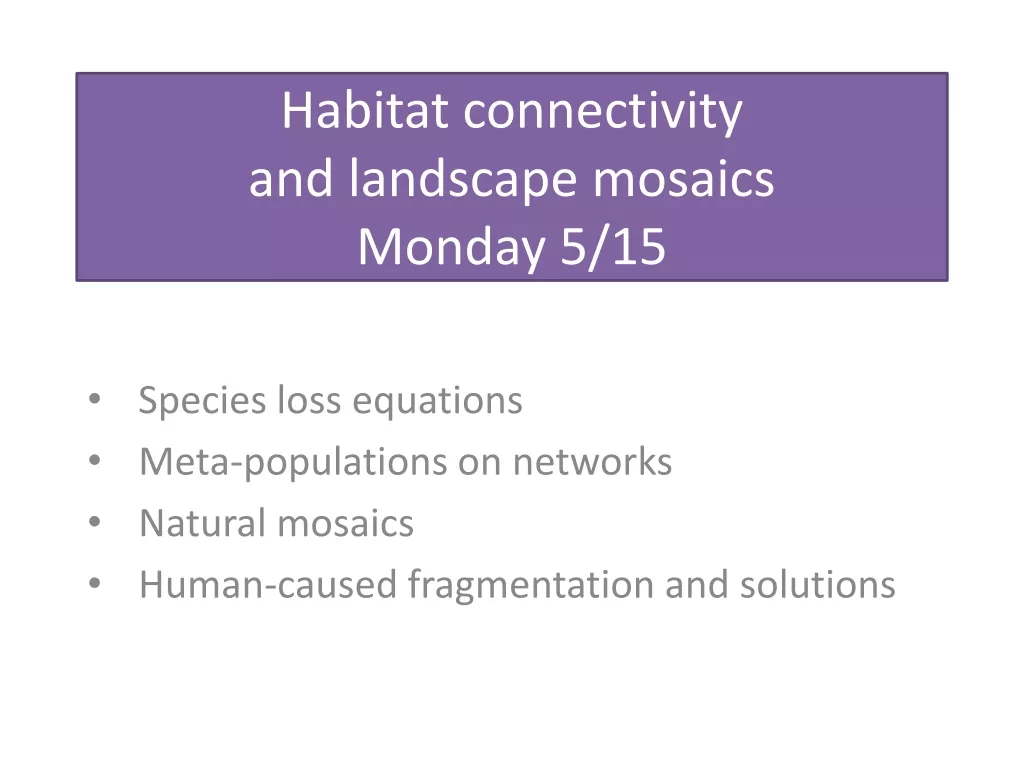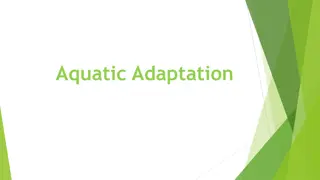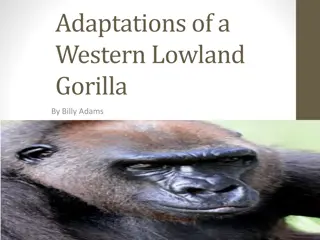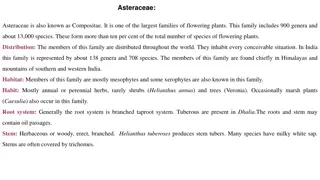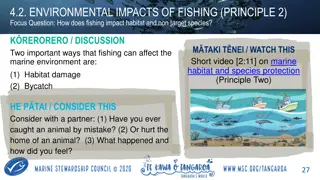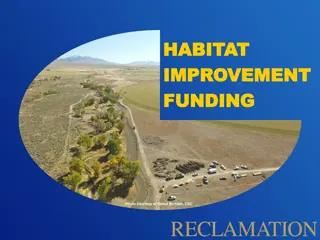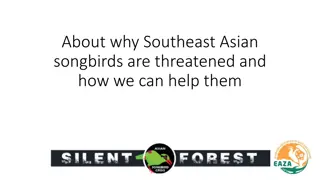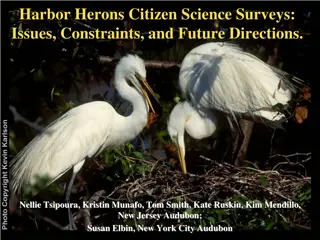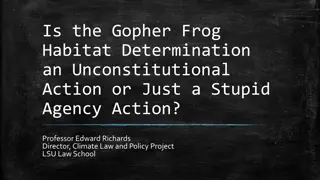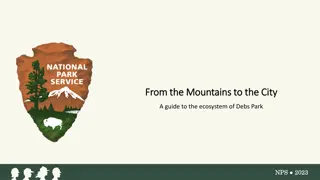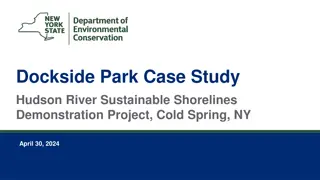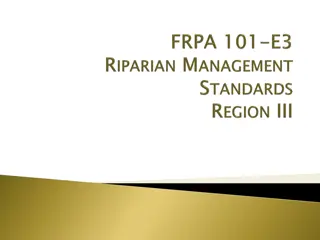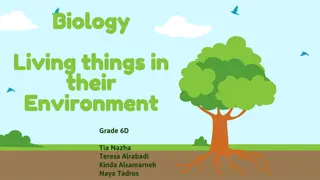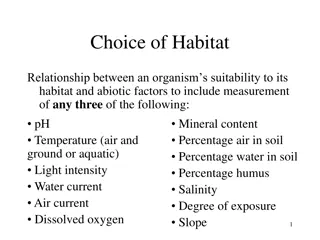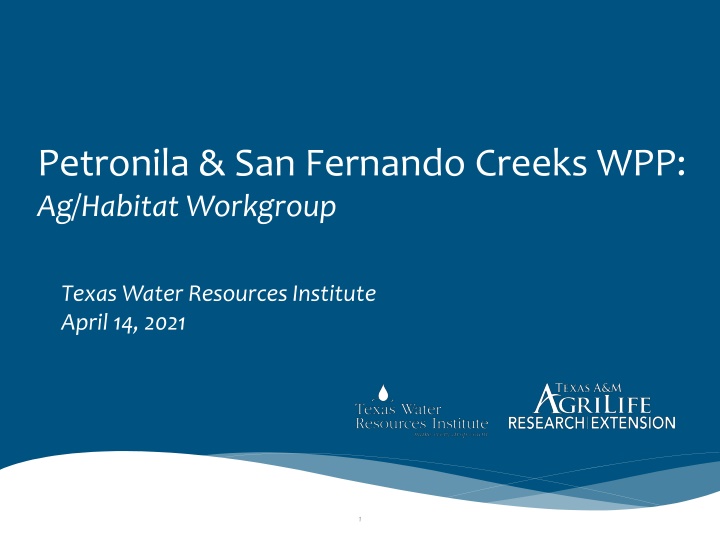
Wildlife Populations and Habitat Management in Petronila & San Fernando Creeks Watershed
Explore population estimates and management strategies for livestock and wildlife in the Petronila & San Fernando Creeks Watershed. Learn about the SELECT model, priority areas for management, and available data sources for population estimation.
Download Presentation

Please find below an Image/Link to download the presentation.
The content on the website is provided AS IS for your information and personal use only. It may not be sold, licensed, or shared on other websites without obtaining consent from the author. If you encounter any issues during the download, it is possible that the publisher has removed the file from their server.
You are allowed to download the files provided on this website for personal or commercial use, subject to the condition that they are used lawfully. All files are the property of their respective owners.
The content on the website is provided AS IS for your information and personal use only. It may not be sold, licensed, or shared on other websites without obtaining consent from the author.
E N D
Presentation Transcript
Petronila & San Fernando Creeks WPP: Ag/Habitat Workgroup Texas Water Resources Institute April 14, 2021 1
Meeting Outline Present and discuss Livestock/Wildlife populations estimates in the watershed Introduce the SELECT model as a tool to help identify priority areas for management recommendations Discussion on potential management measures 2
Population Estimates Primary Populations Cattle Feral Hogs Dogs/Cats (Urban Workgroup) Deer Used to estimate bacteria contributions Animal estimates strongly tied to specific land uses or covers Secondary/Low Estimates Hogs, sheep, horses, goats, poultry Used to identify potential loading areas in the watershed Limited/No Data Waterfowl/birds, bats Helps to prioritize management recommendation Did we miss any? Are any of these inappropriate? 3
Where Do They Come From? Available Data Input from You Local, regional, state and national data sets No one knows the watershed like you do NRCS, NRI, TCEQ, TPWD, TWRI, USDA We need your opinions on what numbers of each population are appropriate Population estimates Recommended stocking rate- based estimates Estimation methods 4
Scale Down County Level Data National Ag Statistics are reported on the county level County level data multiplied by respective percent of each county in the watershed Entire county not in the watershed Total area of county (acres) Area of Percent of total county within watershed Percent of watershed within each county watershed within county (acres) 1,149,259 421,469 37% 34% Duval 555,730 362,488 65% 29% Jim Wells 578,888 189,812 33% 15% Kleberg 549,498 273,333 50% 22% Nueces 2,833,374 1,247,102 100% Total 5
Land Use and Land Cover Hay/Pasture: 15.6% Shrub/Scrub: 45.1% Developed Land: 4.1% Cropland: 29.7% Forest: 1.4% Herbaceous: 1.2% Wetlands: 2.4% Barren Land: 0.3 % Open Water 0.1% 6
National Ag Statistics Survey (NASS) USDA effort to measure agricultural production across the nation (cattle, sheep, goats, horses, hogs, poultry) Conducts the Census of Agriculture every 5 years 2017 most recent published Conduct interim surveys to illustrate annual numbers (less extensive survey, but still good idea of what is in the area) 7
Recommended Stocking Rates / Densities FSA stocking rate recommendations for livestock by forage type TPWD estimates deer densities for various areas of the state # of acres per deer for various RMUs Texas A&M estimated feral hog density # of acres per hog 8
Cattle FSA Stocking Rates Duval 16,060 Jim Wells 27,981 Kleberg 4,469 Nueces 4,212 2017 NASS Data Duval 5,297 Jim Wells 22,022 Kleberg 6,257 Nueces 4,659 Total 52,722 Total 38,235 Baffin Bay USDA Recommended Stocking Rates (acres/animal unit) Land Use data and Stocking Rate Forage Type Name Discrepancy - pasture/grassland = pasture/hay - Light brush = grassland/herbaceous - Avg. med/heavy brush = shrub/scrub Land Use County pasture/grassland light brush medium brush heavy brush Duval 7 18 27 34 Jim Wells 10 15 20 25 Nueces 5 15 23 28 Kleberg 17 21 n/a 32 9
Other Livestock 2017 NASS Data Livestock in Watershed County Hog Horse Goat Sheep Duval 104 94 222 149 Jim Wells 130 695 1,660 340 Kleberg 63 145 290 104 Nueces 148 361 270 170 Total 445 1,201 2,442 763 10
Deer Deer RMU density estimates survey density: variation for different counties Feral Hogs Feral Hogs Texas A&M Survey Wildlife in Watershed County Feral Hogs Deer Duval 5,297 6,430 Jim Wells 22,022 10,764 Kleberg 6,257 5,491 Nueces 4,659 8,114 Total 38,235 30,798 11
Population Estimate Questions What is your take on these population estimates? Is one more correct than the other? Are they both wrong? How much rangeland (shrub/scrub) is used for livestock? Is the distribution of livestock across the counties even or are there high-density areas? What adjustments need to be made to improve estimate appropriateness? 12
Estimating Potential E. coli Loads Spatially Explicit Load Enrichment Calculation Tool (SELECT) Characterizes E. coli sources based on spatial factors Land use Soil Source population density Input Data: Land use/land cover data updated Watersheds delineated Source info (animal numbers, OSSFs, wildlife, WWTFs, etc.) Data layers used in SELECT: Land use Hydrography (stream network) Urban areas Watershed boundary County boundary Soils 13
EXAMPLE E. coli Loads: Cattle Estimated Population: 30,787 Land Use: Rangeland (shrub/scrub, herbaceous) Managed Pasture/Hay E. coli Load 1 x 1011 CFU/animal/day 14
What Do SELECT Results Tell Us? Results demonstrate a worst-case E. coli loading scenario Shows relative potential for E. coli loading from smaller subbasins within the larger watershed Information can help prioritize where management practices are recommended for implementation 15
Questions about SELECT? Any questions about SELECT? What it does? How it is used? What it tells us? Next Steps: Will run SELECT model to help prioritize management recommendations Will show by watershed (Petronila and San Fernando) Present outputs and next meeting 16
Mgmt Example 17
WQMPs in the Petronila & San Fernando Creeks Watershed Petronila Creek Watershed 93 WQMPs on 18,907 acres total 13,176 crop, 4,111 pasture, 1,380 range, 239 other San Fernando Creek Watershed 43 WQMPs on 10,112 acres total 3,807 crop, 1,943 pasture, 3,969 range, 392 other 20
Discussion Questions What do you see as possible barriers for implementation with landowners in the watershed? What activities/support do you think are important to bring to the watershed to help encourage implementation of the watershed protection plan? Ag Field Days/Demonstrations Educational Trainings Funding for implementing conservation practices Technical assistance Others? 21
Questions? Lucas Gregory, PhD Texas Water Resources Institute LFGregory@ag.tamu.edu Clare Escamilla Texas Water Resources Institute clare.entwistle@ag.tamu.edu "This effort was funded through a State Nonpoint Source grant from the Texas State Soil and Water Conservation Board.

